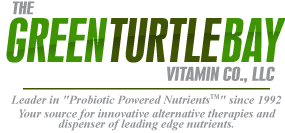Silicon
Effects of germanium and silicon on bone mineralization.
The chemical properties of germanium (Ge) are similar to silicon (Si). This study investigated whether Ge can substitute for, or is antagonistic to, Si in bone formation. Sixty male weanling Sprague-Dawley rats were randomly assigned to treatment groups of 12 and 6 in a 2 x 4 factorially arranged experiment. The independent variables were, per gram fresh diet, Si (as sodium metasilicate) at 0 or 25 micrograms and Ge (as sodium germanate) at 0, 5, 30 or 60 micrograms. Results confirmed that Ge does not enhance Si deprivation and provided evidence that Ge apparently can replace Si in functions that influence bone composition. When Si was lacking in the diet, calcium and magnesium concentrations of the femur were decreased; this was reversed by feeding either Ge and/or Si. Similar effects were found for zinc, sodium, iron, manganese and potassium of vertebra. There were some responses to Si deprivation that Ge could not reverse; Ge did not increase femur copper, sodium or phosphorus or decrease molybdenum of vertebra, effects that were evoked by Si supplementation. Additionally, some findings suggested that 60 micrograms Ge/g diet could be a toxic intake for the rat. On the other hand, some responses induced by Ge indicate that this element may be acting physiologically other than as a substitute for Si. Germanium itself affected bone composition. Germanium supplementation decreased Si and molybdenum in the femur and increased DNA in tibia. Regardless of the amount of Si fed, animals fed 30 micrograms Ge/g diet had increased tibial DNA compared to animals fed 0 or 60 micrograms Ge; however, tibial DNA of animals fed 30 micrograms Ge was not statistically different from those animals fed 5 micrograms Ge. Thus, Ge may be of nutritional importance.
Biol Trace Elem Res 1994 Aug;42(2):151-64
Silicon deprivation decreases collagen formation in wounds and bone, and ornithine transaminase enzyme activity in liver.
We have shown that silicon (Si) deprivation decreases the collagen concentration in bone of nine-week-old rats. Finding that Si deprivation also affects collagen at different stages in bone development, collagen-forming enzymes or collagen deposition in other tissues would have implications that Si is important for both wound healing and bone formation. Therefore, 42 rats in experiment one and 24 rats in experiment two were fed a basal diet containing 2 or 2.6 microg Si/g, respectively, based on ground corn and casein, and supplemented with either 0 or 10 microg Si/g as sodium metasilicate. At three weeks, the femur was removed from 18 of the 42 rats in experiment one for hydroxyproline analysis. A polyvinyl sponge was implanted beneath the skin of the upper back of each of the 24 remaining rats. Sixteen hours before termination and two weeks after the sponge had been implanted, each rat was given an oral dose of 14C-proline (1.8 microCi/100 g body wt). The total amount of hydroxyproline was significantly lower in the tibia and sponges taken from Si-deficient animals than Si-supplemented rats. The disintegrations per minute of 14C-proline were significantly higher in sponge extracts from Si-deficient rats than Si-supplemented rats. Additional evidence of aberrations in praline metabolism with Si deprivation was that liver ornithine aminotransferase was significantly decreased in Si-deprived animals in experiment two. Findings of an increased accumulation of 14C-proline and decreased total hydroxyproline in implanted sponges and decreased activity of a key enzyme in proline synthesis (liver ornithine aminotransferase) in Si-deprived animals indicates an aberration in the formation of collagen from praline in sites other than bone that is corrected by Si. This suggests that Si is a nutrient of concern in wound healing as well as bone formation.
Biol Trace Elem Res 2002 Dec;89(3):251-61
Source: The Life Extension Institute…(April 2003)




